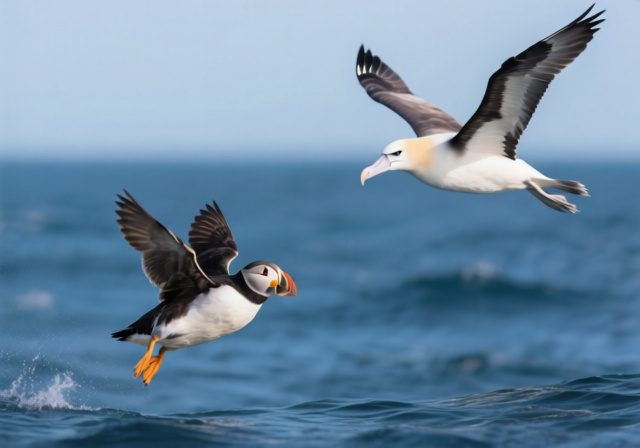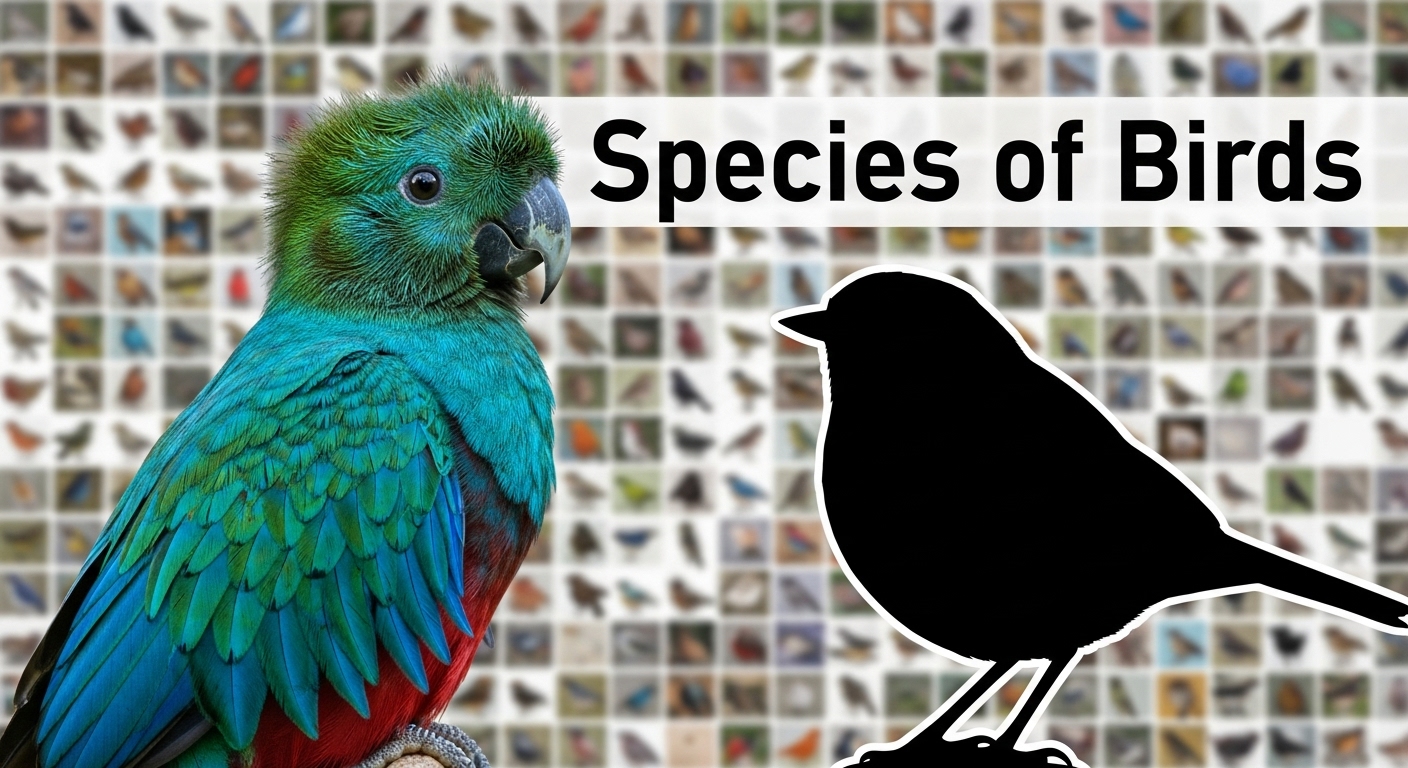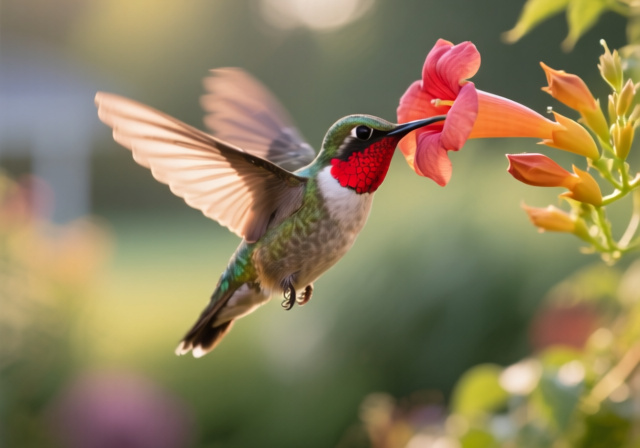

Have you ever wondered exactly how many bird species share our planet? You’re not alone – this seemingly simple question has surprised scientists and bird enthusiasts for decades. The answer changes depending on who you ask, creating confusion among everyone from students to seasoned birders. After researching data from major ornithological organizations and consulting with experts, I’ve discovered that understanding these variations reveals fascinating insights into how science evolves and why accurate counting matters for conservation.
As of 2025, there are approximately 11,000 recognized species of birds in the world, though different scientific organizations report slightly different numbers ranging from 11,017 to 11,524 species. Some researchers even suggest the true number could be closer to 18,000 species when accounting for hidden diversity.
This comprehensive guide will help you navigate the complex world of bird taxonomy, understand why different sources give different numbers, and discover how these differences impact bird conservation worldwide. Whether you’re a student writing a paper, a birder maintaining a life list, or simply curious about nature’s diversity, you’ll find clear explanations backed by authoritative sources.
Proper bird species identification often requires good optics, especially when observing distant or rare species. Understanding what do numbers on binoculars mean is essential for choosing the right equipment for accurate species documentation.
If you’re looking for a quick number, here are the current counts from the world’s leading ornithological organizations as of 2025: The Clements Checklist (maintained by Cornell Lab) lists 11,017 species, BirdLife International recognizes 11,524 species, and the IOC World Bird List maintains approximately 11,000 species. These differences aren’t errors – they reflect legitimate scientific disagreements about what constitutes a separate species.
Quick Summary: Most major bird organizations agree on approximately 11,000 species, but counts vary from 11,017 to 11,524 depending on taxonomic approaches and recent research findings.
| Organization | Species Count | Update Frequency | Primary Focus |
|---|---|---|---|
| Cornell Lab/Clements | 11,017 | Annual | North American focus, eBird integration |
| BirdLife International | 11,524 | Annual | Conservation focus, global coverage |
| IOC World Bird List | ~11,000 | Twice yearly | International research focus |
| AviList Unified | 11,131 | Annual planned | Future global standard |
These variations might seem small in percentage terms, but they represent hundreds of species that could be either combined or split depending on scientific interpretation. The choice of which checklist to follow can significantly impact everything from conservation priorities to personal birding achievements.
The differences in bird species counts stem from three primary factors: different species concepts, varying research methodologies, and geographic focuses. Think of it like different chefs classifying apples – some might group Granny Smith and Golden Delicious as “apples,” while others might emphasize their distinct characteristics as separate categories. Both approaches have merit, just as different scientific approaches to species classification each bring valuable perspectives to understanding bird diversity.
Major organizations also have different priorities. The Clements Checklist, integrated with eBird, tends to be more conservative with changes that might affect millions of bird observations. BirdLife International takes a more conservation-oriented approach, sometimes splitting species when it helps protect distinct populations. The IOC World Bird List, used widely by international birders and researchers, often incorporates new research more quickly, resulting in twice-yearly updates that can change species counts.
Species Concept: The scientific framework used to determine what constitutes a distinct species, based on factors like reproductive isolation, genetic differences, physical characteristics, and behavioral patterns.
The Rufous-backed Wren provides a perfect example of these taxonomic debates. Some checklists consider it a single species ranging from Mexico to Costa Rica, while others split it into multiple species based on vocalizations and DNA evidence. Similarly, the Green-winged Teal is treated as one species by some organizations but split into American and Eurasian versions by others, citing differences in male plumage and hybridization patterns.
These aren’t just academic exercises – they have real-world implications. When a species is split into two, conservation funding must be divided, legal protections must be reassessed, and birders must update their life lists. Peter Kaestner, the first person to document 10,000 bird species, knows this challenge well – he maintains multiple versions of his list to accommodate different taxonomic approaches.
So how do scientists decide what makes a bird a separate species? The answer has evolved dramatically over the past few decades. Traditionally, scientists relied on the Biological Species Concept, which defines species as groups that can interbreed and produce fertile offspring. This approach works well for many birds but creates confusion when populations rarely meet but show clear differences.
Modern ornithology typically uses an Integrative Species Concept that combines multiple lines of evidence. Scientists examine DNA sequences, physical measurements, plumage patterns, songs and calls, breeding behaviors, and geographic ranges. When enough differences accumulate across these factors, scientists may decide to split a species into two or more. The opposite can also happen – when two species are found to interbreed extensively and share most characteristics, they might be lumped together as one.
The DNA revolution has been particularly transformative. Studies have revealed that many familiar birds actually consist of multiple cryptic species – populations that look similar but are genetically distinct. North American warblers, for example, were traditionally counted as about 40 species but genetic analysis suggests the true number might be over 50. These discoveries explain why species counts have increased despite few truly new birds being discovered.
Taxonomic Revision: The process of reevaluating and updating species classifications based on new scientific evidence, particularly DNA analysis, which can result in species being “split” into multiple species or “lumped” together.
You might wonder why it matters whether we count 11,000 or 18,000 bird species. The answer connects to some of the most critical conservation challenges of our time. Species definitions determine legal protections, guide conservation funding, and influence how we measure biodiversity loss. When a widespread species is split into multiple species with smaller ranges, some of those new species might immediately qualify as threatened or endangered.
The IUCN Red List, which tracks extinction risk, relies on species-level assessments. If a species is split into five, each new species must be evaluated separately – potentially revealing conservation crises that were hidden when the populations were grouped together. This happened recently with several tropical birds, where DNA analysis revealed that what was thought to be one widespread species was actually several highly specialized and threatened species.
Laws and treaties designed to protect species also depend on clear taxonomy. As Marshall Iliff from Cornell Lab explains, “Laws and treaties used to protect species don’t work as well when there isn’t consensus on species names.” International agreements like CITES, which regulates trade in endangered species, require precise species identification to be effective.
⏰ Time Saver: Conservation efforts work most efficiently when there’s agreement on species classifications. This is why major organizations are working toward unified checklists through initiatives like AviList.
Perhaps the most compelling reason to care about species counts is their direct link to preventing extinctions. Currently, 13% of bird species worldwide are considered threatened, but this percentage changes with taxonomic revisions. Some conservationists worry that splitting species might dilute conservation resources, while others argue it reveals hidden diversity that needs protection.
The stories of the world’s rarest birds illustrate these challenges. The Stresemann’s Bristlefront, with only one known individual remaining in Brazil, represents both a conservation tragedy and a call to action. Spix’s Macaw, extinct in the wild but the subject of intensive reintroduction efforts, shows how species-focused conservation can make a difference. These species would be invisible to conservation efforts without proper taxonomic recognition.
Monitoring bird populations effectively requires good observation tools. For conservation work and field research, choosing between spotting scopes vs binoculars depends on your specific monitoring needs and the species you’re studying.
You don’t need to be a professional ornithologist to contribute to our understanding of bird species. Citizen science platforms like eBird have revolutionized how scientists track bird populations and distributions. When you submit bird observations with photos or sound recordings, you’re providing data that helps researchers understand species ranges, migration patterns, and even potential new species.
I’ve seen incredible contributions from ordinary bird watchers. Photographs of unusual plumage variations have revealed previously unknown hybrid zones. Recordings of bird songs have uncovered cryptic species that look identical but sound different. Even simple checklists from your backyard can help track how species respond to climate change.
If you’re new to bird watching, having the right equipment makes identification easier and more accurate. Our guide to 8×32 vs 8×42 binoculars can help you choose the right size for your birding adventures. For those just starting out, budget binoculars under $200 provide excellent quality without breaking the bank.
✅ Pro Tip: Document unusual birds with photos and share them on platforms like iNaturalist. Even common birds might show unique characteristics that interest researchers.
For serious birders interested in rare species or challenging identification situations, specialized optics become essential. Many experienced birders use both angled and straight spotting scopes depending on their observation needs and target species.
Bird species identification often requires high-quality optics, especially in challenging lighting conditions. Our guide to best low-light binoculars covers options for dawn and dusk birding when many species are most active.
As of 2025, there are approximately 11,000 recognized bird species worldwide, though counts vary by organization. The Clements Checklist lists 11,017 species, BirdLife International recognizes 11,524, and the IOC World Bird List maintains about 11,000 species.
Yes, there are over 10,000 bird species – currently about 11,000 recognized species. We passed the 10,000 species milestone in the early 2000s as DNA analysis revealed many cryptic species that were previously grouped together.
The Stresemann’s Bristlefront is considered the world’s rarest bird, with only one known individual remaining in Brazil. Other extremely rare species include the Kakapo (around 200 individuals) and the California Condor (about 500 individuals, including captive birds).
Since 1500, approximately 187 bird species have gone extinct, including the Dodo, Passenger Pigeon, and Carolina Parakeet. Currently, 159 bird species are considered extinct in the wild, though some have captive breeding programs working toward reintroduction.
The best checklist depends on your needs: eBird users typically follow Clements, European birders often prefer BirdLife, and international researchers frequently use IOC. For casual birding, any major checklist provides accurate information – consistency matters more than which you choose.
Yes, scientists discover 5-10 new bird species each year, mostly in remote tropical regions. These are typically cryptic species – populations that were previously classified as subspecies but genetic analysis revealed they’re actually distinct species.
The question of how many bird species exist reveals more about science than it does about birds. It shows how our understanding of nature evolves with new technologies and perspectives. Rather than being frustrated by the different numbers, I find it exciting that there’s still so much to learn about the natural world. Each taxonomic revision isn’t just changing a list – it’s revealing new stories about evolution, adaptation, and the incredible diversity of life on Earth.
Whether you’re content knowing there are about 11,000 species or fascinated by the nuances that separate one checklist from another, remember that these numbers represent real living creatures facing real challenges. Understanding and protecting them starts with accurate knowledge, but it continues with the curiosity and passion that drives us to look closer, ask questions, and appreciate the remarkable diversity of birds that share our planet.



